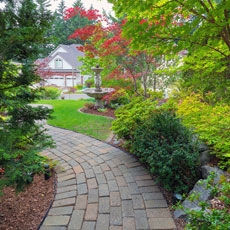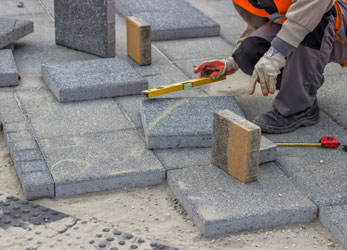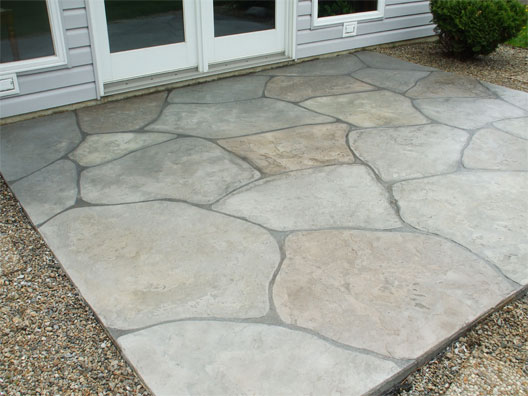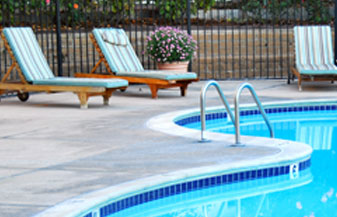Many homeowners are unaware of the benefits that concrete additions can bring to their homes. Concrete additions can provide your home with an extra level of protection and insulation and increase its overall value. If you want to learn more about concrete additions, read on.
What is a Concrete Addition?
A concrete addition is an additional layer of concrete that is applied to an existing concrete surface. This can be done for a variety of reasons, such as increasing the thickness of the concrete, adding reinforcement, or changing the appearance of the concrete.
Why Would I Want to Add a Concrete Addition?
There are many reasons why you might want to add a concrete addition to your home. Some of the most common benefits include:
- Increasing the protection and durability of your concrete surfaces: A thicker layer of concrete can help protect your surfaces from wear and tear and weathering and other environmental damage.
- Adding insulation: Concrete is an excellent insulator, so adding an additional layer of concrete can help to keep your home warmer in winter and cooler in summer. This can lead to lower energy bills and a more comfortable home overall.
- Enhancing the appearance of your concrete: If you’re not happy with the way your concrete looks, a concrete addition can be used to change its appearance. You can use a different concrete color, add patterns or textures, or even create stained concrete.
- Increasing the value of your home: Anytime you make improvements to your home, you increase its value. This is especially true for concrete additions, making your home more attractive to potential buyers.
What Are the Different Types of Concrete Additions?
There are many different types of concrete additions, and the type that’s right for you will depend on your specific needs and goals. Some of the most common types of concrete additions include:
- Thicker Concrete: If you’re looking to increase the durability and protection of your concrete, adding a thicker layer is the way to go. This can be done by simply pouring more concrete on top of your existing surface or adding a layer of reinforcement such as wire mesh or rebar.
- Stamped Concrete: Stamped concrete is a popular choice for those who want to enhance their concrete appearance. You can add patterns and textures to create a unique look with stamped concrete.
- Colored Concrete: If you’re not happy with the color of your existing concrete, you can use colored concrete to change its appearance. There are many different colors available, so you’re sure to find one that you love.
- Acid-Stained Concrete: Acid-stained concrete is a type of colored concrete that uses acid to create a unique mottled look. Acid-stained concrete is perfect for those who want something a little different.
- Stenciled Concrete: Stenciled concrete is a great way to add patterns and designs to your concrete surfaces. You can use pre-made stencils or create your own designs with stenciled concrete.
How Do I Add a Concrete Addition to My Home?
If you’re interested in adding a concrete addition to your home, the best way to get started is to contact a local contractor who specializes in this type of work. They will be able to assess your needs and goals and recommend the best type of concrete addition for your home.
Once you’ve decided on the right type of addition, they will be able to handle the entire process from start to finish, ensuring that your new concrete surface is installed properly and looks great. So if you’re ready to add some extra protection, insulation, or beauty to your home with a concrete addition, contact a local contractor today.
Do I Have to Hire a Concrete Contractor?
Although you can pour concrete and add reinforcements yourself, it’s best to leave this type of work to the professionals. A qualified contractor will have the experience and knowledge necessary to ensure that your new concrete surface is installed properly and looks great. They will also be able to recommend the best type of concrete addition for your needs and goals.
So if you’re interested in adding a concrete addition to your home, the best way to get started is by contacting a local contractor who specializes in this type of work. They will be able to assess your needs and recommend the best type of addition for your home. Then, they will handle the entire process from start to finish, ensuring that your new concrete surface is installed properly and looks great.
What Are The Risks of Installing a Concrete Addition?
Although concrete additions are generally safe, there are some risks that you should be aware of before having one installed. These risks include:
- Cracks: One of the most common problems with concrete is cracking. While small cracks are usually not a big deal, large cracks can weaken the structure of your concrete and cause it to crumble.
- Settlement: Another risk of concrete additions is a settlement. This occurs when the ground beneath your concrete moves, causing your concrete to settle. This can cause cracking and other damage to your concrete.
- Overloading: Another risk to consider is overloading. This happens when too much weight is placed on your concrete, causing it to crack or break.
- Temperature: Another risk to consider is temperature. Concrete can crack in extreme cold or heat, so it’s important to make sure that your concrete is properly protected from extreme temperatures.
- Water: One of the biggest risks to concrete is water. Too much water can cause your concrete to crack and crumble, so it’s important to make sure that your concrete is properly sealed and protected from excessive moisture.
How Can I Protect My Concrete Addition?
There are a few things you can do to protect your concrete addition:
- Seal Your Concrete: One of the best ways to protect your concrete is to seal it. This will help to keep moisture out and prevent cracking and other damage.
- Use a Concrete Protector: Another way to protect your concrete is to use a concrete protector. This will help to keep your concrete looking new and prevent staining and other damage.
- Repair Cracks promptly: If you do notice any cracks in your concrete, it’s important to repair them promptly. This will help to prevent further damage and ensure that your concrete lasts for many years.
- Protect from Extreme Temperatures: As we mentioned before, extreme temperatures can cause your concrete to crack. So it’s important to make sure that your concrete is protected from extreme heat and cold.
- Avoid Overloading: Finally, it’s important to avoid overloading your concrete. This can cause cracking and other damage, so it’s important to make sure that your concrete can support the weight of any furniture or appliances you plan on using.
Concrete additions are a great way to add beauty, protection, and value to your home. But before you have one installed, it’s important to be aware of the risks involved. By following the tips above, you can help to ensure that your concrete addition will last for many years.




